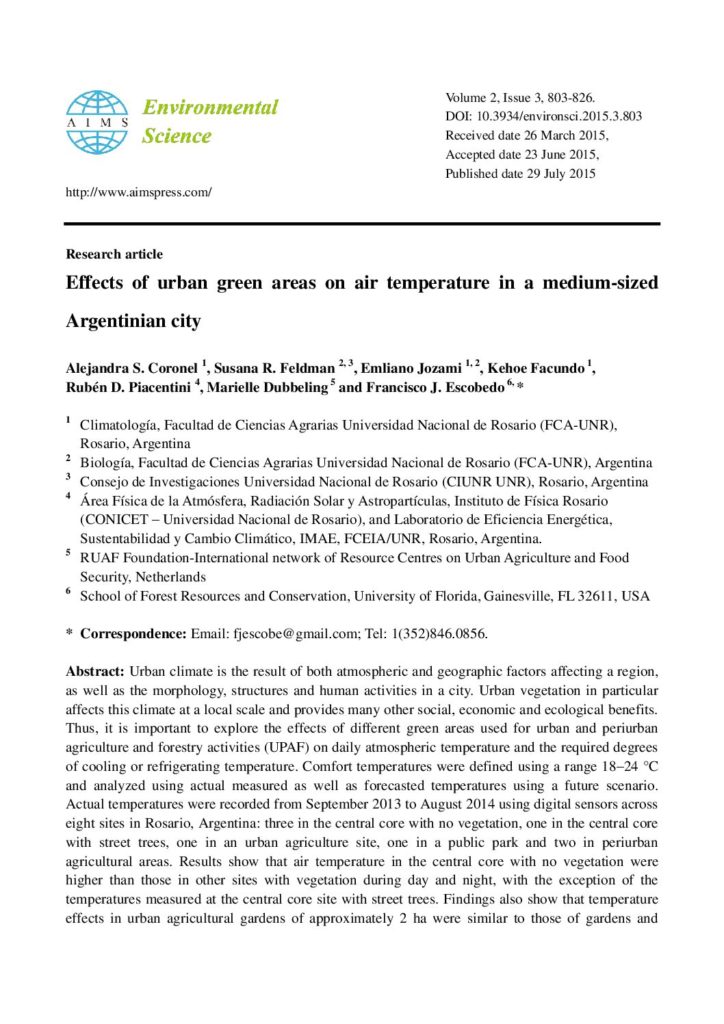Urban climate is the result of both atmospheric and geographic factors affecting a region, as well as the morphology, structures and human activities in a city.
Urban vegetation in particular affects this climate at a local scale and provides many other social, economic and ecological benefits. Thus, it is important to explore the effects of different green areas used for urban and periurban agriculture and forestry activities (UPAF) on daily atmospheric temperature and the required degrees of cooling or refrigerating temperature.
Actual temperatures were recorded from September 2013 to August 2014 using digital sensors across eight sites in Rosario, Argentina: three in the central core with no vegetation, one in the central core with street trees, one in an urban agriculture site, one in a public park and two in periurban agricultural areas.
Results show that air temperature in the central core with no vegetation were higher than those in other sites with vegetation during day and night, with the exception of the temperatures measured at the central core site with street trees.
Findings also show that temperature effects in urban agricultural gardens of approximately 2 ha were similar to those of gardens and public parks 2‒3 ha in size.
Results from this study can be used for integrating urban and peri-urban agriculture and forestry measures into climate change mitigation and urban planning policies in medium-sized cities in the developing world.
Keywords: climate change; cooling requirements; heating requirements; green infrastructure; urban agriculture; urban forestry; urban heat island.

